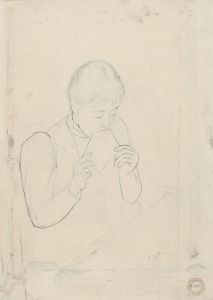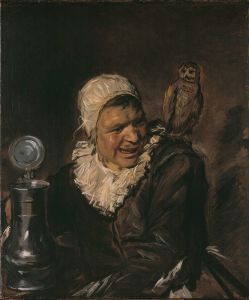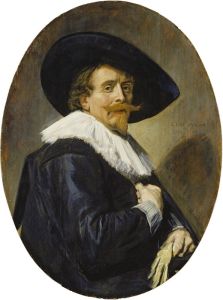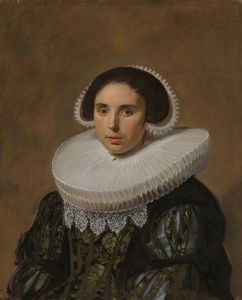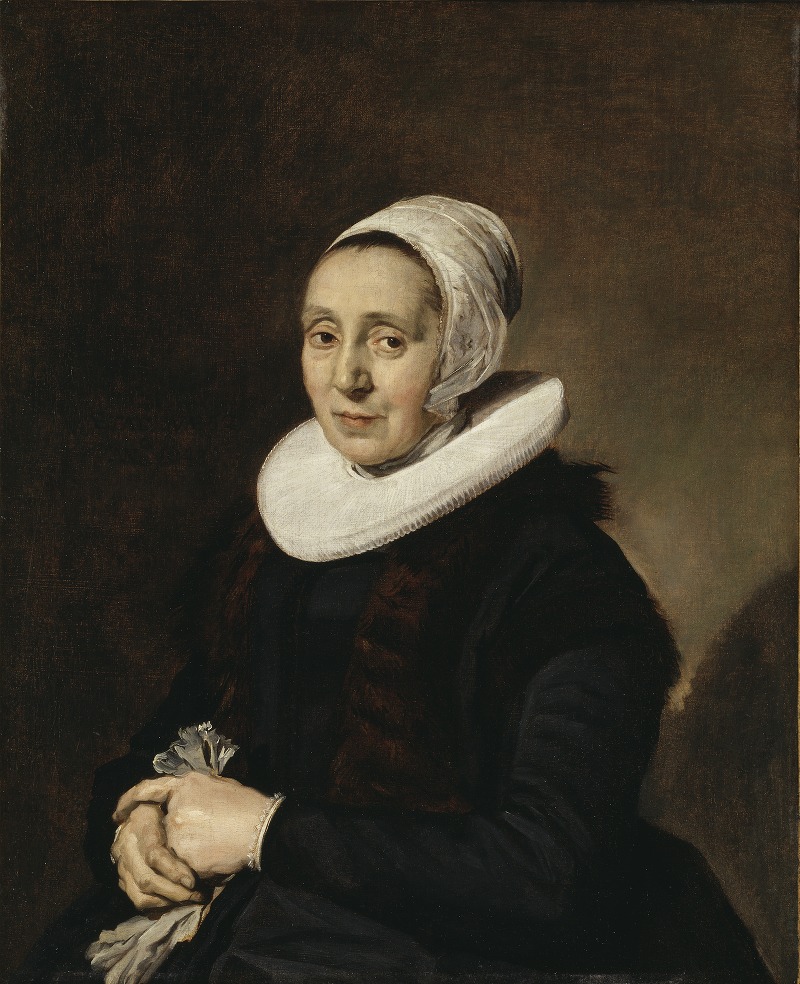
Portrait of a Woman
A hand-painted replica of Frans Hals’s masterpiece Portrait of a Woman, meticulously crafted by professional artists to capture the true essence of the original. Each piece is created with museum-quality canvas and rare mineral pigments, carefully painted by experienced artists with delicate brushstrokes and rich, layered colors to perfectly recreate the texture of the original artwork. Unlike machine-printed reproductions, this hand-painted version brings the painting to life, infused with the artist’s emotions and skill in every stroke. Whether for personal collection or home decoration, it instantly elevates the artistic atmosphere of any space.
Frans Hals, a prominent Dutch Golden Age painter, is renowned for his lively and dynamic portraiture. One of his works, "Portrait of a Woman," exemplifies his skill in capturing the essence and character of his subjects. Although specific details about this particular painting, such as the identity of the woman depicted, are not well-documented, the artwork is a testament to Hals' mastery in portrait painting.
Frans Hals was born in 1582 or 1583 in Antwerp, but his family relocated to Haarlem in the Netherlands when he was young. He spent most of his life in Haarlem, where he became a leading figure in the artistic community. Hals is best known for his portraits, which often feature members of the middle class, civic guards, and other notable figures of his time. His work is characterized by loose brushwork, a lively sense of movement, and an ability to convey the personality and vitality of his subjects.
"Portrait of a Woman" is a fine example of Hals' mature style. The painting likely dates from the 1630s, a period when Hals was at the height of his artistic powers. During this time, he developed a more refined and subtle approach to portraiture, moving away from the more exuberant style of his earlier works. This painting showcases his ability to use light and shadow to create depth and dimension, as well as his skill in rendering textures, such as the fabric of the woman's clothing and the softness of her skin.
The woman in the portrait is depicted with a calm and composed expression, her gaze directed towards the viewer. Hals' use of a limited color palette, focusing on blacks, whites, and earth tones, draws attention to the woman's face and the intricate details of her attire. The background is typically understated, allowing the subject to stand out prominently. This approach is consistent with Hals' focus on the individuality and character of his sitters.
Hals' technique involved the use of visible brushstrokes, which was somewhat unconventional at the time. This method contributed to the sense of immediacy and vitality in his portraits, as if the subject were captured in a fleeting moment. His ability to convey the subtleties of human expression and emotion has been highly praised and continues to be studied by art historians and enthusiasts.
While "Portrait of a Woman" may not be as widely recognized as some of Hals' other works, such as "The Laughing Cavalier" or "The Banquet of the Officers of the St George Militia Company," it remains an important piece within his oeuvre. The painting is housed in a museum collection, where it is appreciated for its artistic merit and as a representation of Hals' contribution to the development of portrait painting during the Dutch Golden Age.
In summary, "Portrait of a Woman" by Frans Hals is a notable example of the artist's ability to capture the essence of his subjects with skillful brushwork and a keen eye for detail. Although specific information about the painting and the identity of the sitter is limited, the work stands as a testament to Hals' enduring legacy in the world of art.







